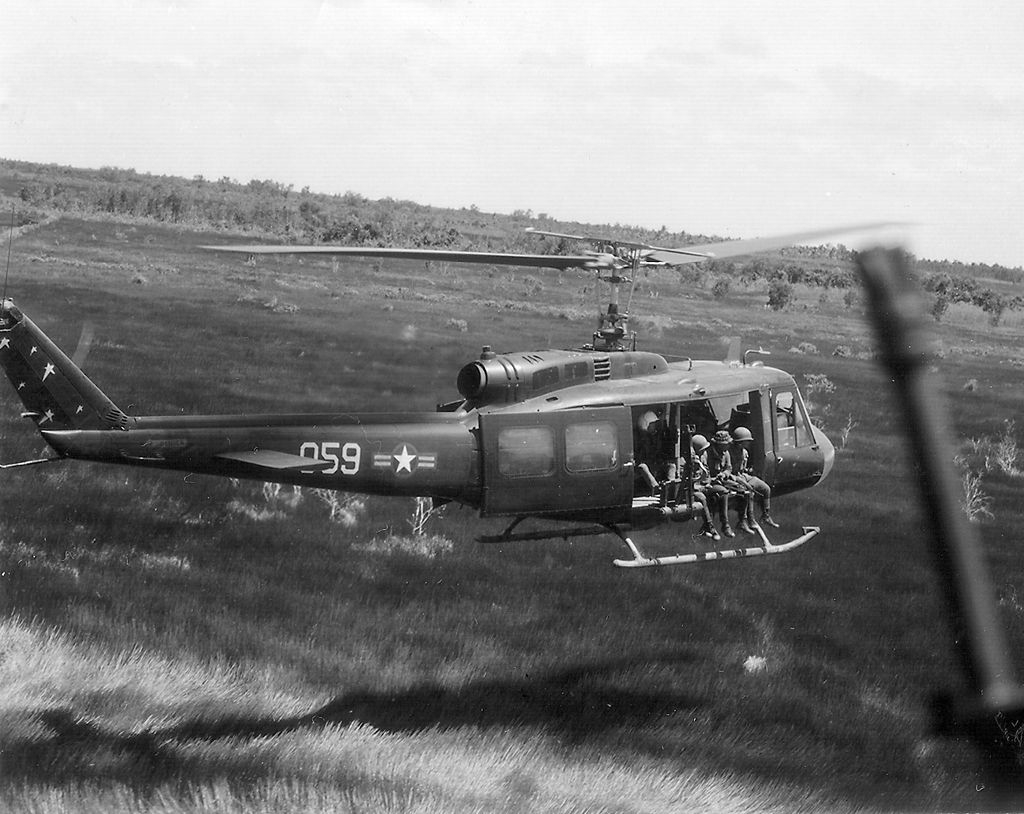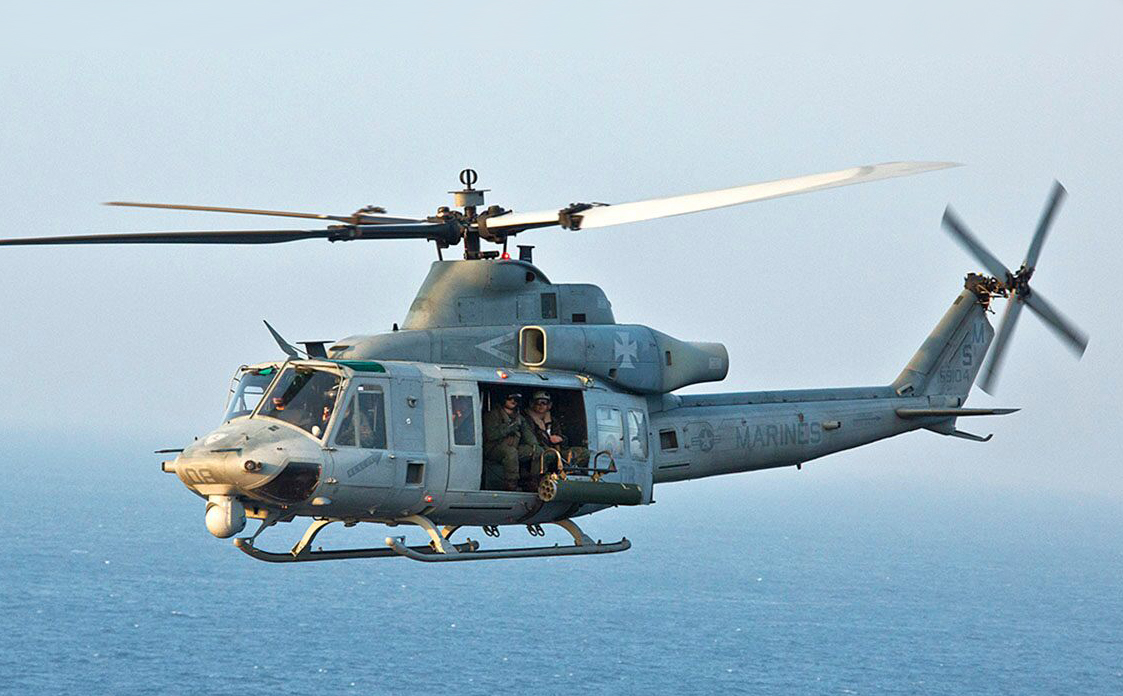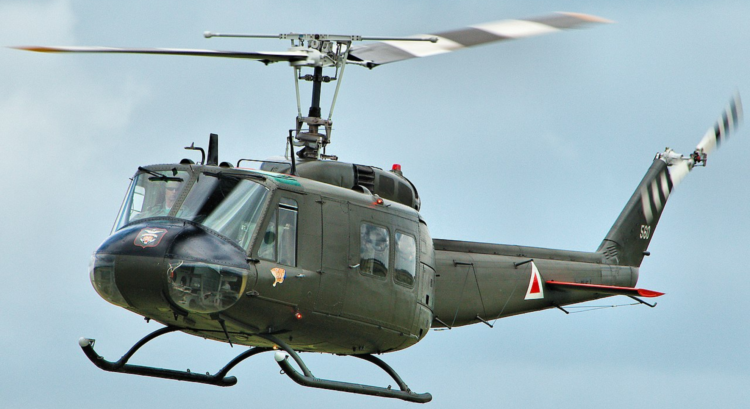Before the revered UH-60 Blackhawk, there was Huey, the first turbine-powered helicopter in service with the US military, and pioneered the air cavalry, which delivered a battalion into the hostile soil of Ho Chi Minh during the peak of the Vietnam War. Even after the war, the utility aircrafts continued to serve, notably in Grenada (1983), Panama (1989), and Operations Desert Shield and Desert Storm (1990-1991).
An Icon Was Built
The US Army, with the support of the Air Force, looked into acquiring new medical evacuation and/or general utility helicopters in the mid-to-late 1950s to replace its then-current aircraft, the Piasecki H-21 “Shawnee” and Sikorsky CH-34 “Choctaw,” which were either too large, underpowered, or too complicated to maintain. Of all the design submissions, Bell Helicopter’s Model 204 was selected for the contract in early 1955.

It was the first turbine-powered aircraft, but it made its maiden flight as the Army’s XH-40 in October 1956 and was even stretched slightly as the YH-40. After the successful prototype development and testing, the Army awarded Bell the green light to produce 100 aircraft in 1960. Then, the designation was changed to HU-1A, bearing the official name “Iroquois” to keep up with the Native American tribe naming tradition—though it was famously known for its “Huey” nickname. The nickname stuck even when the Department of Defense (DoD) redesignated it to UH-1 in September 1962.
The Army’s Workhorse
While Huey was mass produced for civilian use, it has predominantly served in the military—notably in the Vietnam War. It significantly played a role in that war as a “helicopter ambulance” and pioneered the “air cavalry,” where troops were easily and quickly mobilized, flying from one warzone to another.
According to aviation historians, Bell would produce over 100 Hueys per month at the height of the Vietnam conflict. It would be outfitted several times with different armaments, including rocket launchers, grenade launchers, and machine guns. At one point towards the war’s end, Huey even test-armed TOW anti-tank missiles and XM-26 Armament Subsystem during the 1972 Easter Invasion. Huey would garner approximately 7.5 million flight hours alone between October 1966 and 1975, and eleven of its pilots and crewmen would be awarded the Medal of Honor.

Despite losing thousands of these helicopters to enemy small arms fire, Huey would continue to be manufactured and extensively used by the US military and many international forces. The utility helicopter has been improved and upgraded over the years, with a long list of variants until the 2000s, when the US military began replacing the aircraft with newer models. The venerable helicopter was succeeded in Army service by the UH-60 Blackhawk before it retired in 2005. By 2016, the final UH-1 would be permanently grounded from the military after six decades of service, with the remaining thousands of units sold to US allies or transferred to other federal states.
Huey’s Specs and Variants
The straightforwardness of the design of the UH-1 earned its special place in the military. Its original version was fitted with a single Avco Lycoming T-53 turboshaft engine that produced up to 960 horsepower. Though this would be upgraded throughout the years, its later model boasted two engines and rotors equipped with two blades.
Huey can be operated by a crew of three, including the pilot, co-pilot, and door gunner, and has an internal payload capacity of 1,500 kg. In addition, its UH-1D variation can carry up to ten passengers or six stretchers.
The UH-1 was 12.31 meters long and 3.77 meters tall, with a main rotor diameter of 14.63 meters. As previously stated, the aircraft had gone through several variants—including the UH-1B, and upgrades focused on the external and rotor; the UH-1C, a dedicated gunship version; the UH-1D, a Bell Modell 205 featuring a long-fuselage and a larger loading door; the AH-1 Cobra, the first dedicated attack helicopter (also called Huey Cobra); the UH-1E, the US Marine Corps version; and the UH-1F, the US Air Force version, to name a few.

The most recent US military variant was the US Marine Corps UH-1Y Venom (also known as Super Huey). It first flew in 2001 and went into service in 2008 until to date. Upgrades include overhauled General Electric T700-GE-401C engines capable of producing up to 1,550 shaft horsepower, a new four-bladed rotor main system, a modern mission and weapons computer, and advanced communication and navigation equipment. The UH-1Y also received a thermal imaging system in the nose and self-protection systems. Overall, it received a remarkable “improvement in speed, maneuverability, range, crashworthiness, and lift capability” and “enhanced battlefield survivability.










COMMENTS
You must become a subscriber or login to view or post comments on this article.